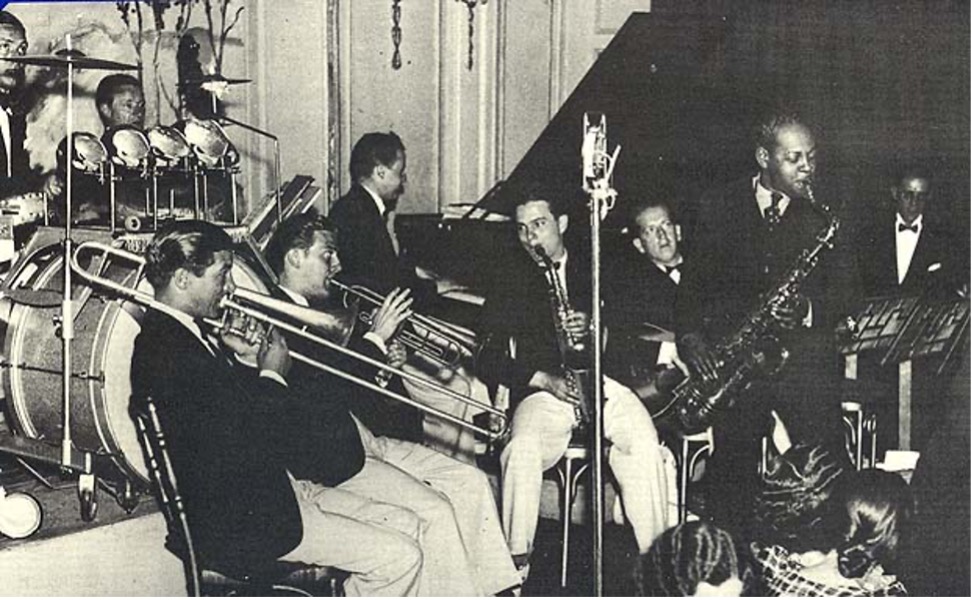Coleman Hawkins
Coleman Hawkins (1904 – 1969), nicknamed “Hawk” and sometimes “Bean”, was an American jazz tenor saxophonist. One of the first prominent jazz musicians on his instrument, Hawkins denied being first and noted his contemporaries Happy Caldwell, Stump Evans, and Prince Robinson, although he was the first to tailor his method of improvisation to the saxophone rather than imitate the techniques of the clarinet. Hawkins’ virtuosic, arpeggiated approach to improvisation, with his characteristic rich, emotional, and vibrato-laden tonal style, was the main influence on a generation of tenor players. While Hawkins became known with swing music during the big band era, he had a role in the development of bebop in the 1940s.
At age four, Hawkins began to study the piano, then the cello at age seven, before switching to the saxophone by age nine. By the age of fourteen, he was playing around eastern Kansas. He studied harmony and composition for two years while still attending high school. Hawkins’s first significant gig was with Mamie Smith‘s Jazz Hounds 1921 – 23, Hawkins joined Fletcher Henderson‘s Orchestra, where he remained until 1934. His playing changed significantly during Louis Armstrong‘s tenure with the Henderson Orchestra (1924–25). He became a star soloist with increasing prominence on records. While with the band, he and Henry “Red” Allen recorded a series of small group sides. In late 1934, Hawkins accepted an invitation to play in London, and toured Europe as a soloist until 1939, performing and recording with the Ramblers in Holland (Foto), Django Reinhardt and Benny Carter in Paris. Following his return to the United States, he quickly re-established himself as one of the leading figures on the instrument by adding innovations to his earlier style.

These transcriptions are available to download for free for the website members. We appreciate a donation if you can afford it. Thank you!
The arrangement charts will appear below once you’re logged in.
👇
